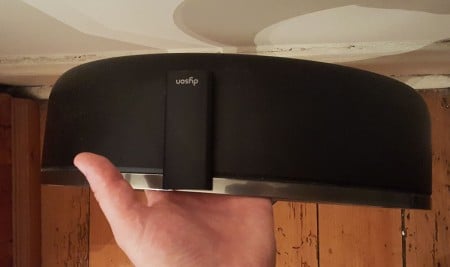Summer this year was a little warmer than expected, and if you didn’t have a decent fan around, chances are you sweltered. This year, we had the latest revision of the Dyson Cool to keep us company, so did it do the job?
This writer has sure lived in some warm places, and while Texas rates pretty high on the hot chart, Sydney came close this past year.
With no air conditioning, though, keeping cool can be an interesting exercise in how much clothing you can take off before potentially blinding your neighbours by an absent-minded glance.
So we turned to fans, because that technology is easy to setup, highly portable, and still pretty good at bringing a hint of relief on a hot summer’s day.
This year, though, we didn’t just rely on the conventional $50 model from the department store down the road, but rather something a little more meaty, with more grunt, and actually reliant on technology that could do more than chop up the air using a rotary blade system, with this fan speeding the air up considerably and forcing it out onto our skin.
For that, we turned to the Dyson Cool, the second generation of Dyson’s Air Multiplier technology that “multiplies” the air by sucking it in through the bottom of the fan, speeding it up through an internal Dyson motor — like the kind used on the company’s vacuum cleaners — and then expelling it out through the orifices found in the circular shape that makes up the look of the fan.
That system makes it a totally different style of fan from the sort you regularly see, with so many rotary blade fans still out there because the technology is cheap, and it works, chopping the air up with a sort of speed that makes it seem cool, even if it’s not really that much colder.
Dyson’s technology tends to handle this exercise a little better because it has to pass through an internal system before it reaches your skin, and it even looks like a fan, which is something people seem to like, almost like the appliance is trying to match our understanding of original fans via skeuomorphism, or the idea that something should look like something else because the original was designed that way.
As for use over the warmer months, this reviewer found it mighty helpful to deal with the nights, particularly because the AM06 was not only much quieter than the previous model (which approached leaf blower levels), but also because of the built-in timer.
You might baulk at the idea that a timer would be necessary in a fan, but when you only really need that constant cool air to get you comfortable and to sleep, having a timer able to provide up to an hour of its cool air makes a lot of sense, because why would you waste energy when you don’t need to?

Six months on, the product still works, is a little dustier, and whenever it’s warm — and it has continued to be fairly warm, despite the seasonal changes — out comes the Dyson Cool, with a lightweight plastic build that is easy to pick up from the fan circle, carry to another room, and control using the remote.
In the time we’ve been using it, the Cool hasn’t skipped a beat, providing cool air to our skin, and when we felt the room could benefit, relying on the oscillation mode to spread that cool air around.
The dogs were particular fans of the fan, so to speak, consistently plonking themselves in front of it, often on our laps. How generous of them.
Over on the sound side, we do need to note that it’s a little louder than a conventional fan, but not by much, and there are ten different speeds for the fan to work at, each providing sufficiently cooler air due to the speed at which the motor runs inside, which generates much of the noise.
And that makes sense: the cooler you want the air, the more it has to multiply, the faster the motor has to run, the more noise it has to generate. It’s a simple logic, and one you can’t expect to be whisper quiet.
At least not yet, though we assume that Dyson has something in the works in its acoustic engineering department.
Mind you, we’ve owned louder computers, so this is a cakewalk for us.
That said, as good as the Cool is, we’re still of the point of view that Dyson’s air multiplying fan is probably a touch too expensive for what it is, asking for a recommended retail price of $449, and pretty much always getting it. Street pricing hasn’t dropped significantly, and the lowest we’ve seen it for is around $427, telling you Dyson has no problem keeping these close to the RRP.
It’s not surprising, either: the Dyson AM06 fans do a good job, are well designed, come from a reputable brand, and are kid safe thanks to that hollowed out middle area. You’ve probably seen the demos and tried it yourself, because this is a fan you can put your hand through.

That technology inside, that portability, the lightweight materials and design aren’t going to come cheap, and while this fetches a larger ticket price than the $50 fan we still have from general goods store, it also does a much better job, a fact I found out when the wife decided to take the Dyson for her side of the bed and leave me with the $50 fan on my side.
At least winter’s coming, so we’ll have to put both away shortly.












